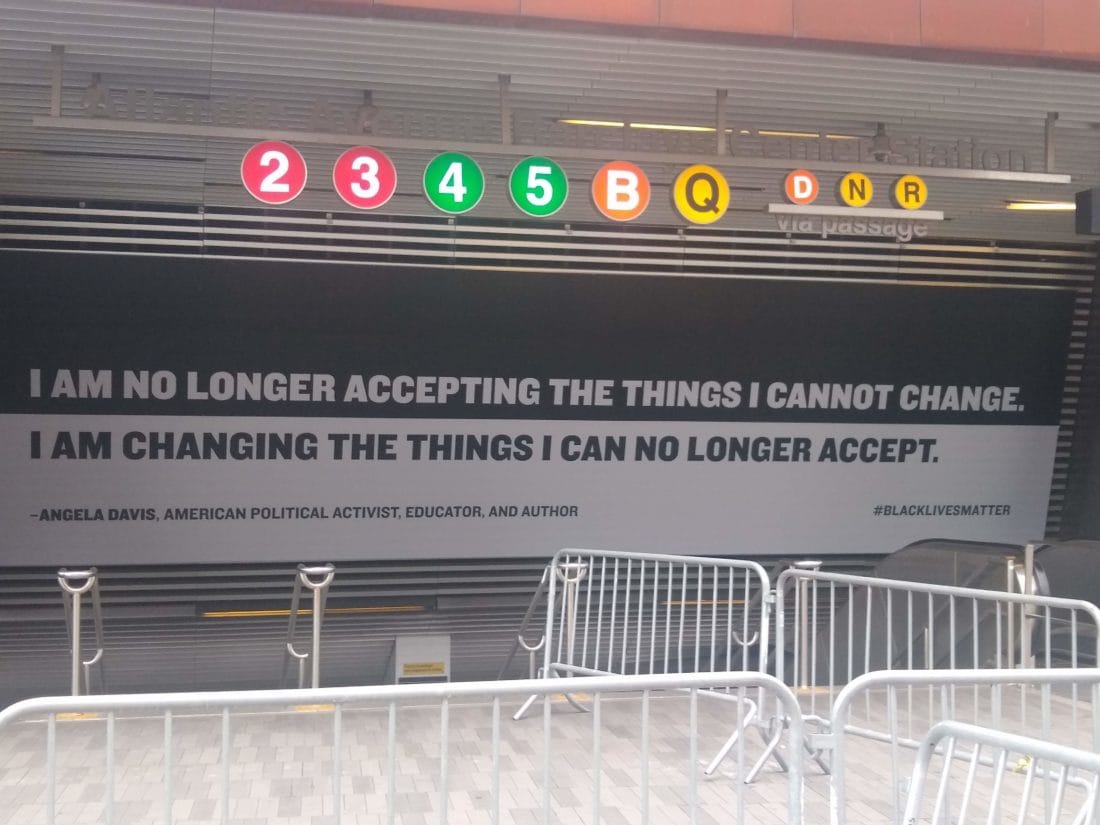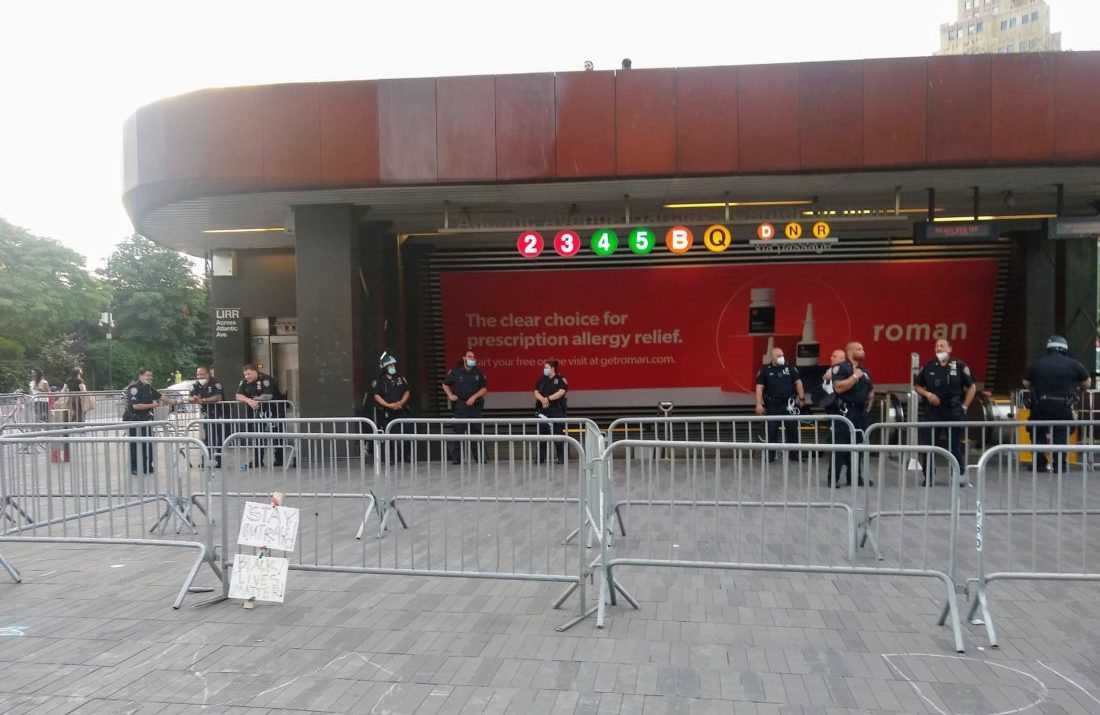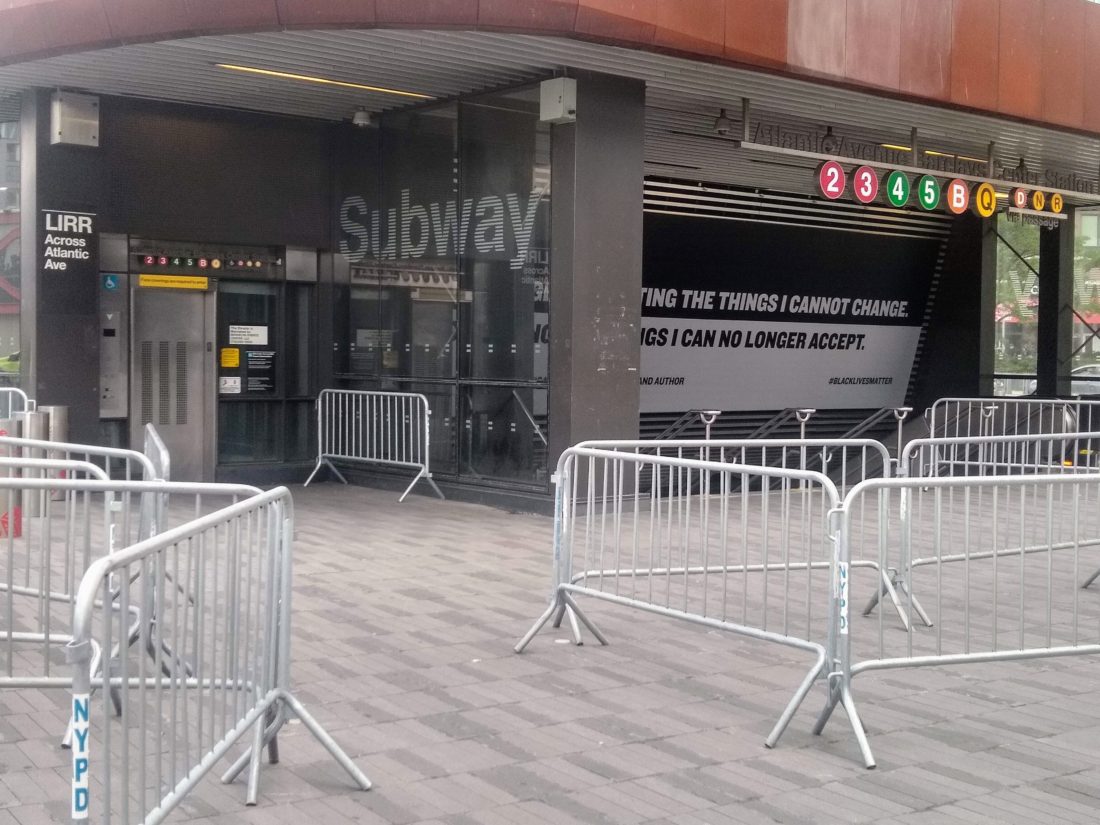How an Angela Davis Quote Wound Up at the Barclays Center Subway Entrance


On June 7, the tenth day of protests that coalesced around the Barclays Center in Brooklyn, arena managers replaced advertising at the venue’s singular oculus with a quote from Martin Luther King Jr.–“The time is always right to do what is right.”
Meanwhile, across the plaza, the entrance to the nearby subway complex, guarded by police officers, featured a billboard for the mail-order pharmaceutical company Roman, touting “The clear choice for prescription allergy relief.”
Sometime within the next twelve days, that plaza entrance offered a non-marketing message in stark black-and-white: “I am no longer accepting the things I cannot change. I am changing the things I can no longer accept,” attributed to “Angela Davis, American Political Activist, Educator, and Author.”
The banner has no corporate or institutional credit, just the hashtag #BLACKLIVESMATTER. It’s gotten little notice on social media–here’s one Twitter salute from June 19, keyed to #Juneteenth, though it is unclear when the banner went up.

Who’s Behind It?
So, how had such a prime commercial space come to host a “revolutionary” political thinker and academic, whose advocacy, as The Guardian recently put it, for “prison reform, defunding the police, restructuring the bail system—had, until recently, been considered too radical for mainstream political thinking”?
This piece of real estate is not, it turns out, controlled by the Metropolitan Transportation Authority (MTA), which operates the subway system. Rather, it’s controlled by the operator of the Barclays Center, the successor to the company that built the new transit portal, and which is also responsible for the often-faulty elevator and escalators.
“A partner of ours wanted to show support but wishes to remain anonymous,” arena spokeswoman Mandy Gutmann explained, but she didn’t answer when the banner went up or when it will be taken down.
The role of the unspecified partner helps explain why the subway entrance bears a quote more radical than that on the arena oculus. (The Barclays Center Instagram account has featured one photo of the Martin Luther King, Jr. quote, but not the Angela Davis banner. )
Who’s the partner? Surely not American Express, GEICO, or Corona, among the arena’s corporate partners. More likely it’s someone connected to the Brooklyn Nets, the NBA, or the entertainment world familiar with Black radicalism. After all, when the NBA season re-starts in Orlando July 31, “Black Lives Matter” is expected to be painted on all three courts, according to ESPN.

An Unmentioned Arena Asset
Also intriguing–at least for arena watchdogs–is the revelation that the arena operator controls more revenue-producing space than previously acknowledged.
The opportunity for new commercial space had not been mentioned when in 2009 the arena’s original developer and operator Forest City Ratner agreed to pay $200,000 a year over 20 years to rename the Atlantic Avenue/Pacific Street complex for the Barclays Center.
That subway space is used for branding year-round, for both advertising, as in the Roman example, as well as arena promotion, such as “The puck drops in October” before the New York Islanders arrived in 2015.
So it’s tough to estimate how much the arena reaps from billboard rentals. Roman, for example, is an arena “partner,” so that billboard space may be part of an overall sponsorship deal.
Still, it’s valuable. Consider that online source pegs the average New York billboard at $10,185 for four weeks, while another estimates $3,000 to $20,000, albeit before a 40% pandemic discount is applied.
In June 2009, MTA Chairman Dale Hemmerdinger expressed pride that the authority had, for the first time, closed a naming rights deal. Either at that point or later, however, the MTA accepted a concession, allowing its counter-party to defray some fraction of its costs.




